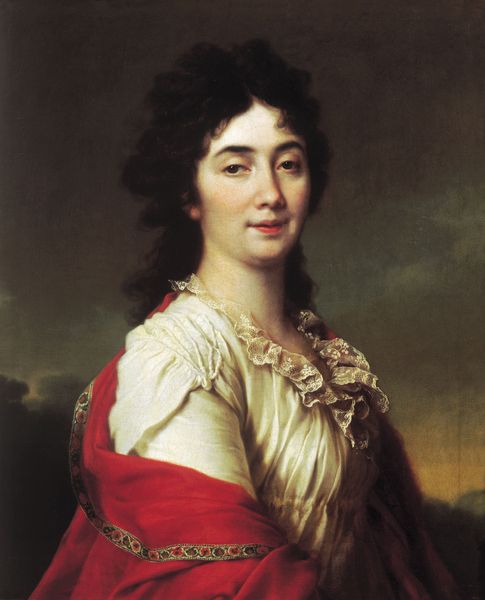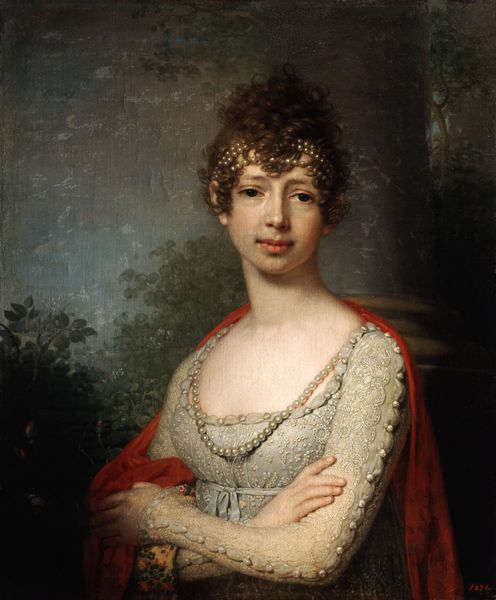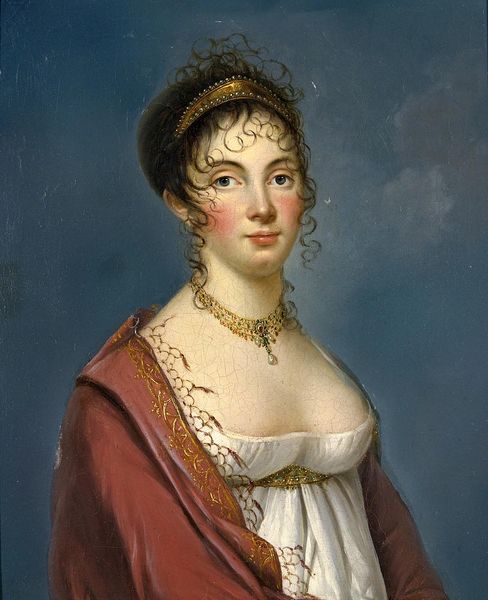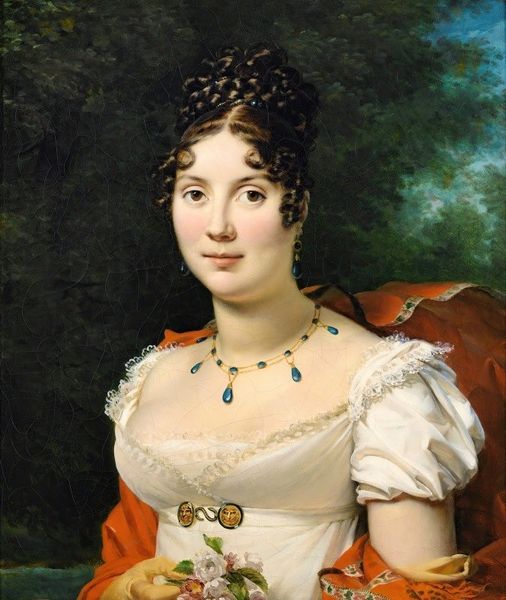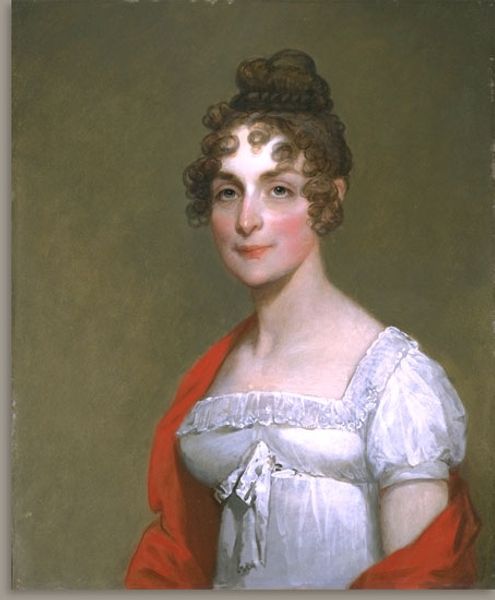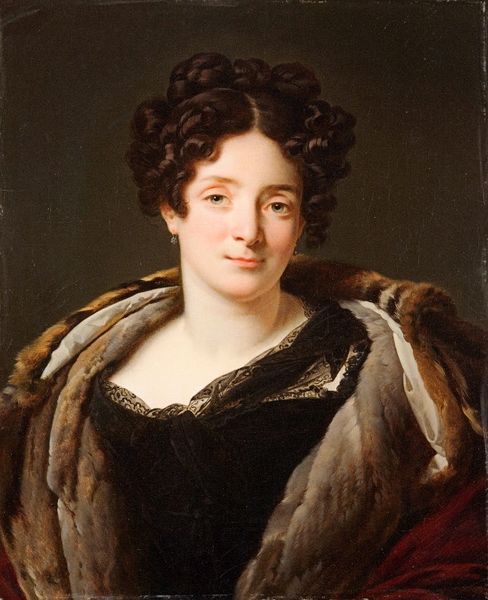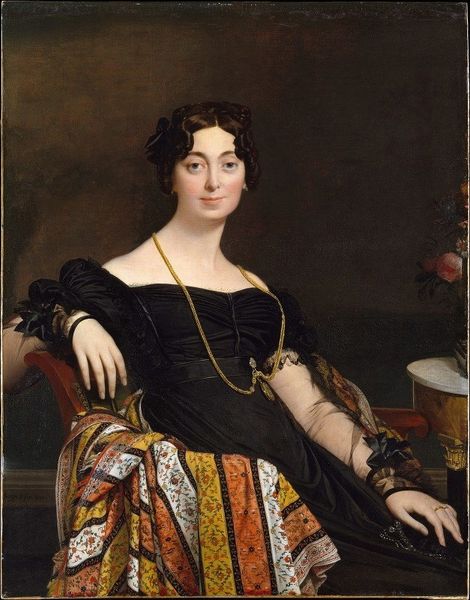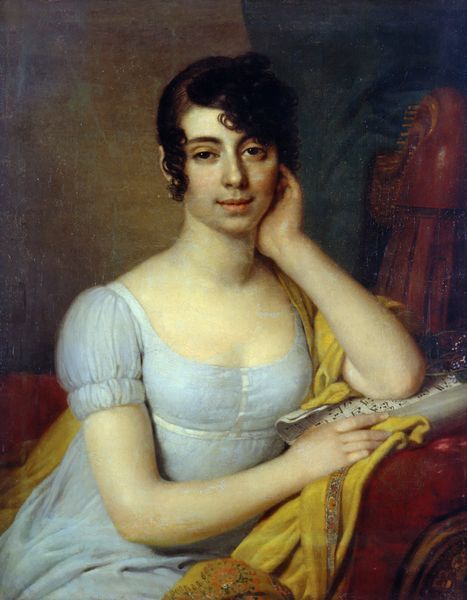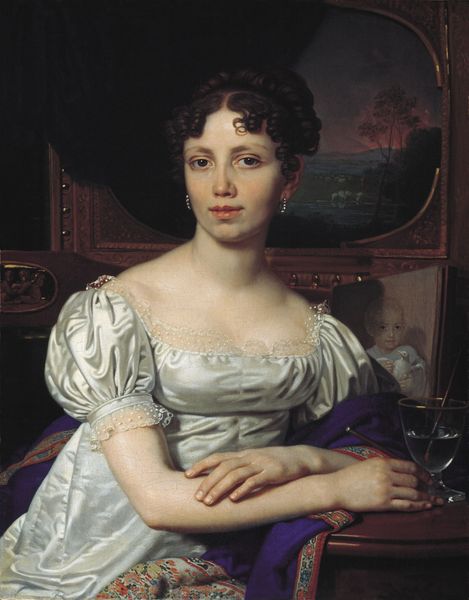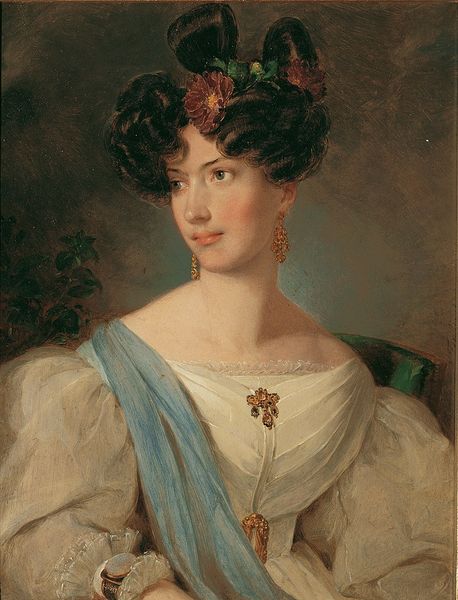
painting, oil-paint
#
portrait
#
painting
#
oil-paint
#
romanticism
#
lady
#
portrait art
#
female-portraits
Copyright: Public domain
Curator: Oh, she’s lovely. She exudes this sort of quiet confidence, doesn't she? I see a story there, but not one being shouted. Editor: Indeed. Standing before us is Vladimir Borovikovsky’s “Portrait of S. A. Rayevskaya,” an oil on canvas completed in 1813, now residing at the Pushkin Museum in Moscow. Immediately, I'm struck by how the seemingly simple composition speaks volumes about the sitter’s place in society and the artistic conventions of the time. Curator: Right? And there’s a fascinating balance—the somber backdrop versus the detailed, almost playful way he renders her shawl and the ornate brooch. I mean, the brooch almost vibrates with detail; the rest of her fades a bit into a gentler, dreamier space. I wonder what she was really like? Editor: Her attire, while seemingly simple, actually speaks to the fashion and political undertones of the era. The empire-waist dress, for instance, became popular due to its associations with Republican values of ancient Greece, as opposed to the decadence of the French aristocracy. And that brooch you pointed out – it is not merely decoration. These sorts of insignia were important signifiers of rank and societal standing during the Imperial Russian era. This piece hints at identity as something constructed and performed, carefully layered with these visual markers of status. Curator: Absolutely, it feels so staged and authentic at the same time! Her gaze has this lovely, almost unsettling directness, as if she is assessing you as much as you are her. Did Borovikovsky capture some spark of defiance there, do you think? Editor: Perhaps "defiance" is too strong, though her posture and direct gaze certainly convey a degree of self-assuredness that departs from purely decorative portraits of women. More likely, Borovikovsky captured her participation in, and adherence to, the structures of Imperial Russian society; here we can perceive the visible signs of her place, perhaps without disrupting these foundations in any significant way. Curator: Well, whatever it is, she certainly holds my attention! It's the tiny details of course - like her faintly flushed cheeks - that seem to breathe humanity into the canvas and remind me that behind every great painting, there is a person staring back at us across time. Editor: And by recognizing this, perhaps we come closer to a deeper, intersectional understanding of not only Russian Romanticism, but also its complicated dialogue within gender, class, and cultural identity, offering us a perspective into both a society, and this person’s soul.
Comments
No comments
Be the first to comment and join the conversation on the ultimate creative platform.
